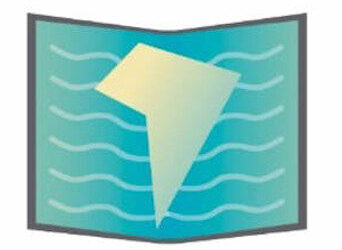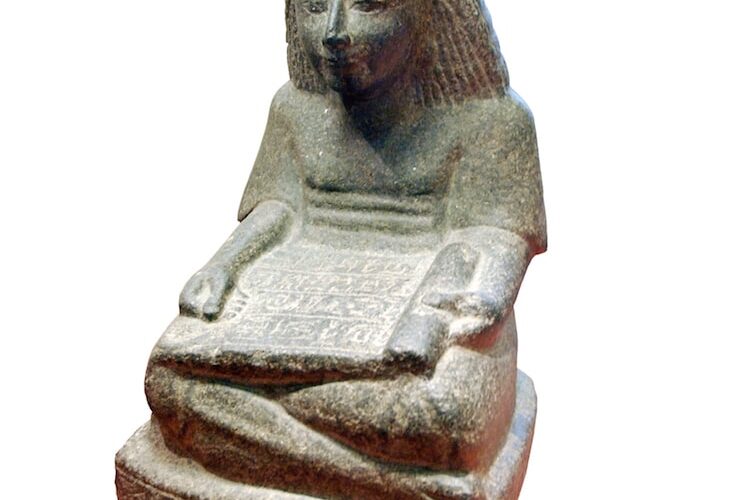Más de 45000 años han pasado desde que los “sapiens” estampaban sus primeros registros de la realidad, en la cueva Leang Tedongnge, en un valle remoto en la isla de Sulawesi, en Indonesia se descubrió la pintura rupestre más antigua hasta ahora, el dibujo de un jabalí de tamaño natural pintado con pigmento rojo que parece ser parte de una escena narrativa más extensa. Luego de superar la edad de piedra, el invento de la escritura marca el inicio de la historia humana, que es definida por la presencia de fuentes escritas autóctonas y el desarrollo de textos coherentes es lo que nos distingue de la prehistoria. Las tablillas mesopotámicas son consideradas la forma de libro más antigua, Junto con ellas surgen los escribas y una noción arcaica de biblioteca; seguidas por el libro egipcio hecho de tinta, papiro, a veces pieles, evolucionando al pergamino. El libro impreso más antiguo que se ha conservado hasta hoy es El Sutra del Diamante, estampado en China por primera vez el 11 de mayo de 868 mediante xilografía. La invención de la imprenta en 1440, por el orfebre alemán Johannes Gutenberg, expande explosivamente la impresión de libros por toda Europa, el primer texto salido de su moderna imprenta, la biblia. En esta época, Frankfort era la ciudad de las ferias, por lo que fue casi natural que, poco tiempo después de editado este primer libro, 1478, se organizara en esta ciudad la primera feria del libro, esta preeminencia se consagró en 1949 al ser la primera feria del libro realizada después de la guerra.
Esta feria se ha convertido en un referente que se replica en todo el mundo con distintos niveles de complejidad, ya que son eventos en los que convergen políticas públicas, como campañas para el fomento a la lectura y de alfabetización, junto con problemáticas de financiamiento como subvenciones, patrocinios y estrategias para expandir el público y el consumo de libros, aunque el objetivo principal, más allá de difundir, es vender. Qué furia cuando la feria deja de ser un festival de intercambio para convertirse en la sede de negocios de los best sellers que quieren pasar a la pantalla, no es que haya nada reprochable en tal afán, pero ¿es esa la única motivación del/a escritor/a? ¿Y el/la lector/a, acaso no abandonamos su necesidad, su deseo de vivir otras vidas en otros mundos a través de las letras, cuando reducimos la literatura al más vendido? Obviamente no podemos desconocer el placer que brinda reunir tantos libros y autores y tener acceso a lecturas y simposios y mesas redondas y cuadradas, quien aprecie la lectura siempre va a disfrutar de la mega oferta del “lleve 2 pague uno”o el “sacar a mil”. Afortunadamente, loas fanaticoas de los libros sabemos que hay ferias y ferias y que nuestro fetichismo no se restringe a un evento anual extra caro y exclusivo, basta que el fin de semana vayas a la feria de tu barrio donde siempre encontrarás el bendito stand del libro usado o tal vez tienes le privilegio de vivir en una comunidad consciente que intercambia y regala libros y revistas en paraderos de autobus, centros comunales, micros o containers reciclados con sus antiguos tesoros esperando por ti.
More than 45,000 years have passed since the «sapiens» stamped their first records of reality, in the Leang Tedongnge cave, in a remote valley on the island of Sulawesi, in Indonesia the oldest cave painting was discovered so far, the drawing of a life-size wild boar painted in red pigment that appears to be part of a larger narrative scene. After overcoming the stone age, the invention of writing marks the beginning of human history, which is defined by the presence of native written sources and the development of coherent texts is what distinguishes us from prehistory. Mesopotamian tablets are considered the oldest form of book. Along with them arose the scribes and an archaic notion of library; followed by the Egyptian book made of ink, papyrus, sometimes fur, evolving into parchment. The oldest surviving printed book is The Diamond Sutra, first stamped in China on May 11, 868 by woodcut. The invention of the printing press in 1440, by the German goldsmith Johannes Gutenberg, explosively expanded the printing of books throughout Europe, the first text to come out of his modern printing press, the Bible. At this time, Frankfort was the city of fairs, so it was almost natural that, shortly after this first book was published, 1478, the first book fair was organized in this city, this pre-eminence was consecrated in 1949 when the first book fair held after the war.
This fair has become a benchmark that is replicated around the world with different levels of complexity, since they are events in which public policies converge, such as campaigns to promote reading and literacy, along with financing problems such as grants, sponsorships and strategies to expand the public and the consumption of books, although the main objective, beyond disseminating, is to sell. What fury when the fair stops being an exchange festival to become the business headquarters of the best sellers who want to go to the screen, it is not that there is nothing reprehensible in such an effort, but is that the only motivation of the writer? And the readers, don’t we abandon their need, their desire to live other lives in other worlds through letters, when we reduce literature to the best seller? Obviously we cannot ignore the pleasure of bringing together so many books and authors and have access to readings and symposia and round and square tables, whoever appreciates reading will always enjoy the mega offer of «take 2 pay for one» or «one dollar only». Fortunately, book fans know that there are fairs and fairs and that our fetishism is not restricted to an extra expensive and exclusive annual event, it is enough that on the weekend you go to the fair in your neighborhood where you will always find the blessed used book stand or maybe you have the privilege of living in a conscious community that exchanges and gives away books and magazines at bus stops, community centers, buses or recycled containers with their ancient treasures waiting for you.








